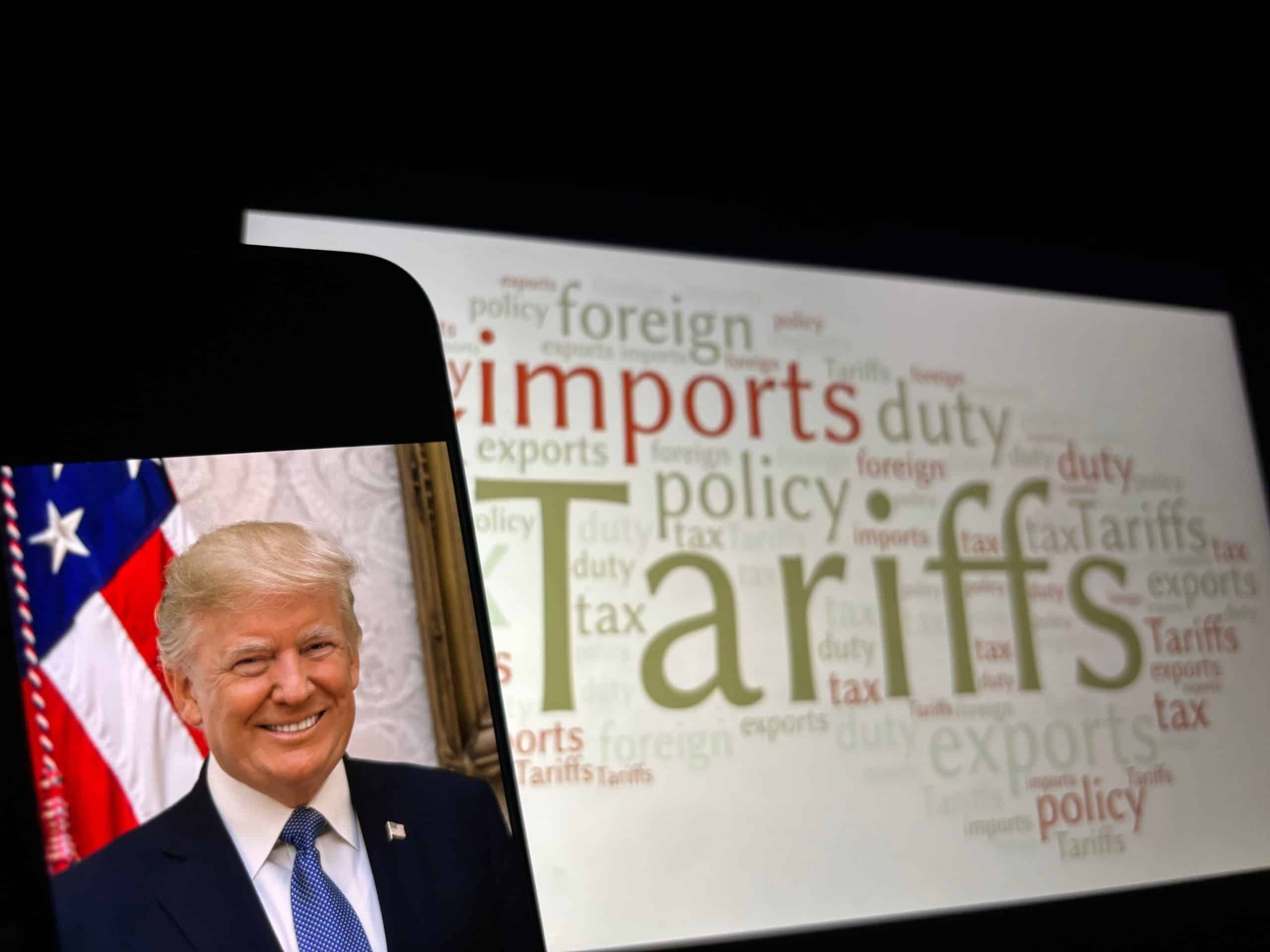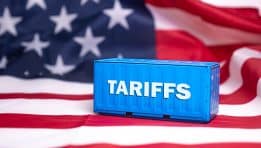The Impact of Trump’s Broad Tariffs on the U.S. Economy Amid Rising Economic Challenges
The implementation of broad tariffs by the Trump administration has sparked widespread discussion regarding its implications on the economy. As these tariffs have now gone into effect, we are beginning to see the uptick in economic challenges, prompting questions about their long-term effects. Understanding the economic landscape amid these changes is crucial for both individuals and businesses.
When tariffs were introduced, many believed that they would help protect American jobs and industries from international competition. Yet, as time progresses, it becomes clear that these policies may have unintended consequences. Let’s explore how these tariffs are affecting various sectors.
Immediate Effects on Consumers
As tariffs increase, you might notice that prices on many goods are rising. This is especially true for imported products. Here are some common consumer items affected:
- Electronics
- Appliances
- Clothing
- Automobiles
For example, if you’ve recently bought a new smartphone or a television, you may have experienced a noticeable jump in pricing. When manufacturers face higher costs due to tariffs, they typically pass those costs onto consumers. This leads to reduced purchasing power, affecting your overall spending habits.
Impact on Businesses
Businesses of all sizes are grappling with the reality of increased operational costs. Many companies rely on imported materials to produce their goods. Here’s how the tariffs are influencing businesses:
- Increased Production Costs: Many manufacturers have seen their raw material expenses surge, making it harder to maintain profit margins.
- Supply Chain Disruptions: Companies are adjusting their supply chains to accommodate higher tariffs, which can lead to delays and inefficiencies.
- Job Layoffs: Some businesses are forced to downsize or cut jobs due to heightened costs and reduced consumer spending.
These challenges can limit growth and lead to financial strain for many businesses. If you own or operate a business, keeping an eye on these trends is critical for making informed decisions.
Sector-Specific Consequences
Some industries are affected more than others. Let’s take a closer look at a few key sectors:
- Manufacturing: The manufacturing sector is often directly impacted by tariffs. Industries relying heavily on imported components face higher price tags, which may lead to increased product costs.
- Agriculture: Farmers, particularly those exporting to other countries, have expressed concerns over retaliatory tariffs that may affect their sales. This could put both farmers and consumers in a vulnerable situation.
- Retail: Retailers are experiencing ripples from tariffs as they re-evaluate pricing strategies, passing costs to consumers or taking a hit to their margins.
Understanding these sector-specific consequences can help you navigate the various outcomes of tariffs and make smarter financial choices.
Global Economic Relations
The tariffs introduced by Trump also affect the U.S. position in global economic relations. Other countries may retaliate with their own tariffs, complicating international trade dynamics. If you’re involved in import or export activities, consider the following:
- Potential trade wars can escalate costs further.
- Regulatory changes may complicate compliance for businesses engaged in international operations.
- Long-term partnerships can be affected, leading to a shift in how companies choose their suppliers.
Such changes could make it more challenging for U.S. businesses to thrive in a global marketplace.
Looking Ahead: Navigating Economic Pain
As economic pain becomes a more pressing concern, it’s essential to stay informed about how tariffs impact the broader economy. Keeping your finger on the pulse can prepare you for necessary adjustments in your personal finances or business strategies. Whether it’s seeking alternative suppliers or adjusting budgets, being proactive can help mitigate the effects.
Ultimately, while Trump’s broad tariffs aimed to strengthen American industries, their real-world ramifications remind us of the interconnectedness of trade and commerce. Adaptability and awareness are key in this evolving economic landscape.
Strategies for American Businesses to Navigate Tariff Changes and Minimize Economic Pain
As the landscape of global trade shifts, American businesses are finding themselves navigating the complexities of tariff changes that can impact their bottom line. When tariffs rise, costs can increase, causing economic strain on companies of various sizes. This article presents effective strategies that entrepreneurs and managers can adopt to minimize economic pain while maximizing their operational efficiency.
Understanding the Tariff Landscape
Staying informed about tariff changes is crucial for businesses. Keep an eye on both domestic and international news sources, trade associations, and governmental publications. Understanding the sectors that are most affected by tariffs can help you make informed decisions about your supply chain and pricing strategies.
Diversifying Supply Chains
Relying on a single source for production or materials can be risky, especially in a fluctuating tariff environment. Consider diversifying your supply chain to lessen exposure to tariffs. Here are some options:
- Alternative Sourcing: Look for suppliers in countries with lower or no tariffs to minimize cost increases.
- Domestic Production: Explore local manufacturing options. While initially more expensive, this strategy can eliminate overseas shipping costs and potential tariffs.
- Supplier Relationships: Build strong relationships with multiple suppliers. This can enhance flexibility and negotiation power in the event of tariff changes.
Investing in Technology
Technology can play a vital role in helping businesses adapt to tariff changes. When you invest in technology, you streamline operations and reduce costs. Here are some ways to leverage technology:
- Automation: Assess your operations for areas where automation can improve efficiency and reduce labor costs.
- Inventory Management Software: Utilize inventory tools to track materials and monitor tariff changes closely.
- Data Analytics: Use data analytics to forecast market trends and adapt quickly to economic shifts.
Adjusting Pricing and Cost Structures
Understanding how tariffs affect your product pricing is essential. If your costs rise due to tariffs, you might need to adjust your pricing strategy. Here are some tips:
- Evaluate Price Elasticity: Understand your customers’ sensitivity to price changes. If they are likely to continue buying at a higher price, it may be time to raise your prices.
- Communicate with Customers: Be transparent about the reasons for price changes. Effective communication can maintain customer trust.
- Focus on Value: Emphasize the unique value of your products. When customers see worth, they may be more willing to absorb higher prices.
Building Financial Resilience
Strengthening your financial position can also prepare your business for unforeseen economic challenges. Here are a few strategies to consider:
- Cut Non-Essential Expenses: Reassess your expenses and cut costs that do not contribute to your core mission.
- Emergency Fund: Establish or bolster an emergency fund. This financial cushion can help during times of economic uncertainty.
- Explore Financial Instruments: Talk to financial advisors about hedging strategies or trade financing options that can mitigate the impact of tariffs.
Engaging with Policy Makers
Lobbying for fair trade practices can help protect your business from adverse tariffs. Consider the following steps:
- Join Trade Organizations: Align with trade associations that represent your industry. They can amplify your voice and concerns to policymakers.
- Participate in Public Discussions: Attend forums and discussions where trade policies are discussed. Your insights may help shape future regulations.
- Build Relationships with Lawmakers: Form connections with local representatives who focus on trade and can advocate on your behalf.
Implementing these strategies can help your business navigate the complexities of changing tariffs and emerging economic pain. The key to long-term success lies in flexibility, adaptability, and proactive engagement in the marketplace. Remaining informed and actively managing your supply chain, pricing, and finances will not only help minimize economic pain but also strengthen your business for future challenges.
Conclusion
The implementation of Trump’s broad tariffs has undeniably created a significant ripple effect across the U.S. economy, coinciding with emerging economic challenges. Many consumers are already feeling the pinch as prices rise on everyday goods and services. For businesses, adapting to these changes requires proactive measures. By exploring alternative sourcing options, optimizing supply chains, and investing in local production, American companies can mitigate the effects of tariffs and maintain their competitive edge in the marketplace.
The road ahead may be rocky, but there are avenues for resilience. Companies must remain agile, leveraging innovation and technology to create efficiencies and reduce costs. Engaging with trade associations and seeking advice from industry experts can provide valuable insights into navigating this complex landscape. Additionally, businesses should communicate transparently with customers about how tariff implications might affect prices and availability, fostering trust and loyalty.
As the economic landscape evolves, it’s crucial to stay informed on policy changes and market trends. By understanding the broader context of tariffs and their potential impacts, businesses and consumers alike can make empowered choices. While the economic pain may be surfacing, with strategic adjustments, there is a path forward that emphasizes sustainability and growth in an unpredictable environment. Ultimately, collaboration and adaptability will be key elements in overcoming the challenges posed by these tariffs and ensuring a stable economic future for all.
Comparison, examination, and analysis between investment houses
Leave your details, and an expert from our team will get back to you as soon as possible
* This article, in whole or in part, does not contain any promise of investment returns, nor does it constitute professional advice to make investments in any particular field.
To read more about the full disclaimer, click here- Articles
- •
- 8 Min Read
- •
- ago 12 minutes
 Germany’s Factory Orders Plunge Unexpectedly in June: Is Europe’s Economic Engine Losing Steam?
Germany’s Factory Orders Plunge Unexpectedly in June: Is Europe’s Economic Engine Losing Steam?
A surprising 1.0% decline in Germany’s industrial orders during June has reignited concerns over the stability of the eurozone’s largest
- ago 12 minutes
- •
- 8 Min Read
A surprising 1.0% decline in Germany’s industrial orders during June has reignited concerns over the stability of the eurozone’s largest
- Articles
- •
- 7 Min Read
- •
- ago 36 minutes
 Eurozone Interest Rates: Steady Climb Amid Global Policy Divergence
Eurozone Interest Rates: Steady Climb Amid Global Policy Divergence
After years of negative interest rates and aggressive monetary easing, the European Central Bank (ECB) has entered a new phase
- ago 36 minutes
- •
- 7 Min Read
After years of negative interest rates and aggressive monetary easing, the European Central Bank (ECB) has entered a new phase
- Articles
- •
- 7 Min Read
- •
- ago 1 hour
 India and the U.S. on the Brink of Economic Severance: Trump Imposes 50% Tariffs Over Russian Oil Ties
India and the U.S. on the Brink of Economic Severance: Trump Imposes 50% Tariffs Over Russian Oil Ties
The White House announced Wednesday it will impose an additional 25% tariff on Indian imports—adding to existing duties and bringing
- ago 1 hour
- •
- 7 Min Read
The White House announced Wednesday it will impose an additional 25% tariff on Indian imports—adding to existing duties and bringing
- Articles
- •
- 11 Min Read
- •
- ago 1 hour
 OPENAI LED A FUNDING ROUND FOR A STARTUP THAT WILL PUT AN AI AGENT INSIDE MICROSOFT EXCEL
OPENAI LED A FUNDING ROUND FOR A STARTUP THAT WILL PUT AN AI AGENT INSIDE MICROSOFT EXCEL
The Impact of OpenAI’s Investment on AI Integration in Excel OpenAI recently led a funding round for a startup aiming
- ago 1 hour
- •
- 11 Min Read
The Impact of OpenAI’s Investment on AI Integration in Excel OpenAI recently led a funding round for a startup aiming












